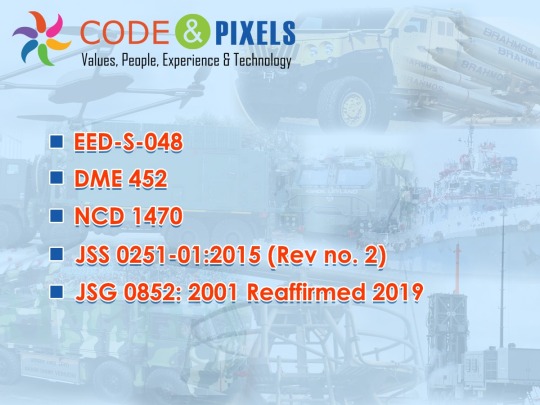#DME coding
Explore tagged Tumblr posts
Text
HME and DME Billing Services | DME Billing Experts

We provide a host of end-to-end revenue cycle, billing and coding services to Durable Medical Equipment and Home Medical Equipment organizations across the nation. With over a decade of experience, our certified experts are well-versed in scaling profitability and possess the know-how to help you navigate through this complex and ever-changing regulatory landscape. Our services are tailored to suit each client’s unique requirements, helping you lower out-of-pocket costs, reduce billing errors and shorten payment cycles ensuring consistent cash flow.
#DME billing services#dme billing#dme coding#dme services#hme billing#hme services#durable medical equipment#home medical equipment
0 notes
Text
Optimizing Revenue Recognition in Durable Medical Equipment Billing
In the complex healthcare billing landscape, revenue recognition stands out as a critical aspect for durable medical equipment (DME) providers. Accurate and timely revenue recognition ensures financial stability and regulatory compliance. However, navigating the complexities of revenue recognition in DME billing can be challenging due to evolving regulations, payer complexities, and varying reimbursement methodologies. This article aims to explore strategies and best practices to optimize revenue recognition in DME billing.
Understanding Revenue Recognition in DME Billing
Revenue recognition in DME billing involves the process of recording and reporting revenue generated from the sale or rental of durable medical equipment. Unlike other industries, healthcare billing, including DME, is subject to strict regulatory requirements, such as those outlined by the Centers for Medicare and Medicaid Services (CMS) and private payers.

Key Considerations in Revenue Recognition for DME Billing Include:
Documentation Requirements: Proper documentation of medical necessity, prescription orders, and supporting clinical notes is crucial for revenue recognition. Incomplete or inaccurate documentation may result in claim denials or delays in reimbursement.
Billing and Coding Compliance: Compliance with correct billing codes and modifiers is essential for accurate revenue recognition. DME providers must stay up to date with coding guidelines and regulatory changes to avoid billing errors and potential compliance issues.
Payer Policies and Reimbursement Rates: Understanding payer policies and reimbursement rates is critical to optimizing revenue recognition. Different payers may have different coverage criteria, prior authorization requirements, and reimbursement methodologies, which affects revenue attainment.
Strategies to Optimize Revenue Recognition
Invest in Staff Training and Education:
It is critical to ensure that billing staff are well trained and knowledgeable about DME billing regulations, coding guidelines, and payer policies. Continuing education programs can help staff stay up to date on industry changes and best practices, reducing errors and improving revenue capture.
Implement Robust Documentation Processes:
It is essential to develop standardized documentation processes that capture all information necessary for claims submission. This includes ensuring that medical necessity is clearly documented, prescriptions are valid, and supporting clinical notes are complete. Automated systems can streamline documentation processes and minimize errors.
Conduct Periodic Audits and Reviews:
Regular audits of billing, claims and documentation processes can identify areas for improvement and compliance risks. By conducting internal audits or engaging third-party audit services, DME providers can proactively address issues, mitigate risks, and optimize revenue recognition.
Take Advantage of Technological Solutions:
Using advanced billing software and revenue cycle management (RCM) systems can improve efficiency and accuracy in revenue recognition. These solutions automate billing processes, facilitate claims submission, and provide insights through analytics, allowing DME providers to identify revenue optimization opportunities.
Improve Communication With Payers and Referring Providers:
Establishing open communication channels with payers and referring providers is essential to clarify coverage policies, resolve claim disputes, and address reimbursement issues promptly. Building collaborative relationships can facilitate smoother revenue recognition processes and improve overall financial performance.
Monitor key performance indicators (KPIs):
Tracking KPIs such as days sales outstanding (DSO), denial rates, and revenue per patient can provide valuable insights into revenue cycle performance. By monitoring KPIs regularly, DME providers can identify trends, measure progress against benchmarks, and make data-driven decisions to optimize revenue recognition.
Best Practices for Revenue Recognition Compliance
In addition to implementing optimization strategies, adhering to best practices for revenue recognition compliance is crucial for DME providers. Some best practices include:
Stay Up to Date With Regulatory Changes: Monitor regulatory updates from CMS, Healthcare Common Procedure Coding System (HCPCS), and other governing bodies to ensure compliance with billing regulations and coding guidelines.
Maintain Accurate Documentation: Document all patient encounters, medical needs, and billing activities accurately and completely to support claims and mitigate compliance risks.
Promptly Follow Up on Denied Claims: Establish a process to identify and resolve denied claims quickly to prevent revenue leakages and minimize reimbursement delays.
Conduct Regular Compliance Training: Provide ongoing training to staff on compliance requirements, ethical billing practices, and fraud prevention to maintain a culture of compliance within the organization.
Engage Legal and Compliance Experts: Seek guidance from legal and compliance experts to ensure billing practices align with regulatory requirements and industry standards.
Conclusion
Optimizing revenue recognition in DME billing services require a proactive approach that encompasses staff education, robust processes, technology adoption and compliance. By implementing the strategies and best practices outlined in this article, DME providers can optimize billing operations, improve revenue capture, and ensure compliance with regulatory requirements, ultimately fostering financial stability and sustainability in an overall landscape. dynamic healthcare system.
0 notes
Text
DME Billing and Home Health Billing: Integrated Medical Billing Services for Better Care
Optimize your DME and home health billing with our integrated medical billing services. Improve care quality and efficiency with our support.
#DME Billing#Durable Medical Equipment (DME) Billing#DME Billing New York#DME Billing services#Durable Medical Equipment (DME) Billing Services#DME Billing services USA#Durable Medical Equipment Billing Massachusetts#top Durable Medical Equipment Billing company#Durable Medical Equipment Billing Services Rhode Island#DME Medical Services Connecticut#Durable Medical Equipment Billing Agency Delaware#DME Billing Agency Florida#DME Billing Company New Jersey#Best DME Billing Company South Carolina#Top DME Billing Company Texas#Top DME Billing Company Ohio#Professional DME Billing Company USA#Cheap DME Billing Company Virginia#Outsourcing DME Billing Maine#Durable Medical Equipment Billing Services Company#DME Billing Services Company Georgia#Best DME Billing Services Company#Best Durable Medical Equipment Coding Services Company#Leading DME Billing and Coding Services Company#Durable Medical Equipment Billing Company California#Top DME Billing and Coding Company Pennsylvania#Professional DME Billing Company New Hampshire#Cheap DME Billing services Oklahoma#Durable Medical Equipment Billing Services#Outsourced Home health Billing Services
0 notes
Text
Mastering Gastroenterology Coding: Proven Steps to Improve Accuracy

Accurate gastroenterology coding is vital to reimbursement and compliance. This manual describes some strategies for minimizing coding errors, improving documentation, and ensuring correct selection of procedure and diagnosis codes.
#Accurate gastroenterology coding#gastroenterology coding#gastroenterology billing#dme billing services#healthcare#medical billing services#medical billing#billing services
0 notes
Text
The CY 2025 CMS DMEPOS Fee Schedule is live — featuring critical updates including new HCPCS codes, rural ZIP code rate enhancements, CPI-U-based price increases, and more. Is your billing team ready to adapt and optimize reimbursement?
Our latest blog highlights key changes and provides essential strategies to help DME suppliers and billing professionals: • Stay compliant with updated CMS guidelines • Reduce denials through proactive billing practices • Maximize revenue by aligning with pricing and modifier changes • Automate oxygen servicing and other recurring claims • Correctly apply the KL modifier for diabetic supply billing
Staying ahead of regulatory changes is key to sustainable revenue. Info Hub Consultancy Services (ICS) supports DME providers across the U.S. with end-to-end RCM and coding services tailored for durable medical equipment billing.Read the full blog now @ https://bit.ly/3S8DwxnInfo Hub Consultancy Services Experts in CMS-aligned DME billing solutions that reduce denials and accelerate reimbursements 30% increase in collections | 200+ certified professionals | 40+ medical specialties Visit: www.infohubconsultancy.com Email: [email protected] Call: +1 (888) 694-8634
#outsourcing medical billing and coding services providers in India#reliable Offshore medical billing and coding services providers in India#DME Billing#Outsource DME Billing#DME Billing Company#Best Outsource DME Billing and coding Company#Top Outsource DME Billing company#Professional Outsource DME Billing Company In India#Cheap Outsource DME Billing Company#Outsource DME Billing Services#DME Billing Services Agency#Best DME Billing Agency#Offshore DME Billing and coding#Offshore DME Billing Services India#Offshore DME Billing Agency India#Best Offshore DME Billing Company India#Offshore DME Billing Company In India#Outsource DME Billing Services Agency India#Best Outsource DME Billing Agency India#1 Outsource DME Billing Services Company India#Best DME Billing Services Agency India#Top DME Billing Services Agency India#Professional DME Billing Services Agency India#Cheap DME Billing Services Agency India#Outsourcing DME Billing to India#Outsourcing DME Billing Services India#Offshore DME Billing and Coding#Offshore DME Billing and Coding Services#Offshore DME Billing and Coding Agency#DME Billing and Coding Company
0 notes
Text

#denial management#medical billers and coders#medical billing company#medical billing services#medical coding services#rcm#rcm services#revenue cycle management#healthcare billing service#dme billing services
0 notes
Text
0 notes
Text
https://www.mediclaimmanagement.com/dme-billing-services
#medical billing and coding#revenue cycle management#healthcare information management#claims processing#claims management software#medical coding#healthcareclaims#medical billing services#dme billing services#denial management services
0 notes
Text
Documentation standards Vs IETM Standard EED-S-048 |DME 452 |NCD 1470 |JSS 251 |JSG 0852
Technical documentation is a very broad word used in tender documents/Scope Documents. They put the heading as Technical Documentation and in brackets write IETM Level -4 or IETM class-4 mentioning EED-S-048 OR DME 452 OR NCD 1470 JSS 0251 and JSG 0852 standards and ask OEM to deliver in DVDs and some sets of Hard copies.
Some SOTRs may even have Training Aids under Technical documentation.

Steps for Creating Technical Documentation:
(step 1&2 is done by OEM and Step 3 is executed by the IETM Software Vendor)
STEP 1 (Content writing)Writing content/ preparing the manual based on the standards (EED-S-048, DME 452 OR NCD 1470.)
STEP -2 Standardising / formatting the content Converting the raw content into a proper technical document using JSS standard.
STEP -3 Converting the final PDF manuals to IETM Converting the approved/vetted Manul to the IETM database using the IETM authoring tool / IETM software.
Your Scope or SOTR shared by the Indian Navy to make IETM will have the Standard names i.e. EED-S-048 OR DME 452 OR NCD 1470.
EED-S-048These are Naval standards. Specification of Documentation for new Construction Ships,
DME 452 The Directorate of Marine Engineering (DME) is a part of the Materiel Branch and works under the overall command and control of the Chief of Materiel, as PSO, and Assistant Chief of Materiel (Dockyard & Refits) as APSO. Documentation Specifications
NCD 1470 Director of Standardisation – Department of Defence Production Requirements For Preparation of Documentation For Hull Equipment, Structure, Material and System
JSS 0251-01:2015 (Rev no. 2) JOINT SERVICES SPECIFICATION (JSS)Procedure for preparation and production of technical publications for electronic and electrical equipment
JSG 0852: 2001 Reaffirmed 2019
Joint Services Guide (JSG)Indian defence standard to make IETM
EED-S-048, DME 452, and NCD 1470:
are purely standards defined by the Navy guiding OEMs to follow these guidelines while making documentation. These are purely technical stuff, and only Defence scientists or technical teams of OEMs who were involved in the development of equipment/devices can prepare. They need domain expertise.
These are absolutely in no way relevant to IETM development.
By adhering to EED-S-048 OR DME 452 OR NCD 1470 these standards your technical team will make manuals i.e. User handbooks, Technical Manuals, Maintenance manuals, MRSL etc.
The content may be written poorly formatted by the domain experts as, aesthetically arranging and making a table of contents, header, footers etc. is not the work of technical people.
Once this content is written by the experts the documentation team will come to the picture.

Following is the Sequence of Contents to Be Followed While Making Document:
Front/cover page which is printed on thicker paper or laminated
The title page is the same as the Front-page
Record of changes
List of other associated handbooks
Safety warnings in red colour
First-aid instructions
Cautions & Notes
Demolition instructions
Change Notice
List of contents
List of illustrations
Text/ content
The separate card titled Illustrations
Illustrations
Sepaarte card titles Appendix “A” , B,C
Appendix or appendices
Back Cover Page
Once the document is made available this will be shared with DGQA and other competent authorities i.e. defence labs etc.
Once these documents are fully vetted they enter into to next phase which is IETM.

In short, the work of the IETM service provider starts, once your final manuals are frozen or vetted by the end client.
The IETM service provider is not an expert in the domain, and the IETM team consists of all the software development team like, Angular Java programmers, database engineers, content integrators, and Quality assurance team etc., and they are not experts in the domain hence what whatever manual is made available to the team they simply convert every line into database and creates Database of the manuals.
#ietm level iv#ietm software#elearning#ietm level 4#software#ietm developement#ietm code and pixels ietm hyderabad#ietm#code and pixels#technology#IETM vendors#IETM Documentation#Documentation standards#IETM Standard EED-S-048#DME 452#NCD 1470#JSS 251#JSG 0852#Technical Documentation#interactive electronic technical manual software#ietm framework#ietm manual ietm development in hyderabad#IETM Document
1 note
·
View note
Text
Digital Monster Entry (DME)
Name: Soloogarmon
(lit. Sól Monster of Loup Garou)
Stage: Perfect
Attribute: Virus
Type: Demon Beast
A digimon that has succeeded in mastering the sinister magic data of the mythical Warg, which slept in the deepest parts of its DigiCore.
Program code written in a special language lines the inside of the armor that covers its whole body, suppressing its enormous amount of magical power, which is transformed into raging magical flames as if it were sealed magic.
Soloogarmon is able to freely manipulate the magical flames by modifying the program code, and these manipulated flames can be utilized for all kinds of actions such as attacking, moving and posture control.
It can produce a focused ultra-high-temperature magical flame called "Prominence Laser"
From the index and its middle fingers of both of its hands, and despite being a flame it can shoot it to distant enemies as if it were a laser beam, its capacity to easily manipulate the magical flames that its body bares, it's exploded with its special moves.
•Producing the Prominence Laser from its index and middle fingers of both of its hands, he uses these ultra-high-temperature magical flames to shoot the enemy.
•Makes the magical flame of its Vánagandr, the mace it uses to fight, burn at its highest temperature, forming a blade and slashing with it, this is the Eruption Howling.
•The Skröll Rage that takes advantage of the magical flames spewing from its shoulders to move at high speed, hurling the Vánagandr at the enemy.

#digimon#blog#blog entry#coding#larp#story#fictional world#digimon vpet#vpet#virtual pet#v pet#digital monster#digital monsters#profile#soloogarmon#Sól#Vánagandr#flames#magic
3 notes
·
View notes
Text
HME and DME Billing Services | DME Billing Experts

We provide a host of end-to-end revenue cycle, billing and coding services to Durable Medical Equipment and Home Medical Equipment organizations across the nation. With over a decade of experience, our certified experts are well-versed in scaling profitability and possess the know-how to help you navigate through this complex and ever-changing regulatory landscape. Our services are tailored to suit each client’s unique requirements, helping you lower out-of-pocket costs, reduce billing errors and shorten payment cycles ensuring consistent cash flow.
0 notes
Text
Enhancing Compliance with HIPAA Regulations in DME Billing
In the healthcare industry, compliance with the Health Insurance Portability and Accountability Act (HIPAA) regulations is paramount to protecting patient privacy and ensuring the security of healthcare information. This is especially critical in Durable Medical Equipment (DME) billing, where sensitive patient data is routinely exchanged between providers, suppliers, and payers. This comprehensive guide explores the importance of HIPAA compliance in DME billing and provides strategies for enhancing compliance to safeguard patient information and mitigate risks.
Understanding HIPAA Regulations in DME Billing
The Health Insurance Portability and Accountability Act (HIPAA) was enacted in 1996 to establish national standards for protecting the privacy and security of personal health information (PHI). HIPAA regulations apply to covered entities, such as healthcare providers, health plans, and healthcare clearinghouses, as well as their business associates, including DME suppliers and billing companies.

Key Components of HIPAA Regulations Relevant to DME Billing Include
Privacy Rule:
The HIPAA Privacy Rule governs the use and disclosure of PHI by covered entities and their business associates. It establishes safeguards to protect the privacy of patients' health information and grants individuals certain rights regarding their PHI, such as the right to access and request amendments to their records.
Security Rule:
The HIPAA Security Rule outlines requirements for safeguarding electronic PHI (ePHI) against unauthorized access, use, and disclosure. Covered entities and business associates must implement administrative, physical, and technical safeguards to protect the confidentiality, integrity, and availability of ePHI.
Breach Notification Rule:
The HIPAA Breach Notification Rule requires covered entities and their business associates to notify affected individuals, the Department of Health and Human Services (HHS), and, in some cases, the media, following the discovery of a breach of unsecured PHI. The rule establishes criteria for assessing the severity of breaches and determining appropriate notification requirements.
Enforcement Rule:
The HIPAA Enforcement Rule outlines procedures for investigating complaints of HIPAA violations and imposing penalties for non-compliance. The Office for Civil Rights (OCR) within the HHS is responsible for enforcing HIPAA regulations and conducting audits to assess compliance among covered entities and business associates.
Challenges in Achieving HIPAA Compliance in DME Billing
DME billing services presents unique challenges in achieving and maintaining compliance with HIPAA regulations due to the following factors:
Complexity of Data Exchange:
DME billing involves the exchange of sensitive patient information, including diagnosis codes, treatment plans, and insurance details, between multiple parties, including healthcare providers, suppliers, insurers, and patients. Managing and securing this data across different systems and stakeholders can be challenging and requires robust privacy and security measures.
Use of Electronic Health Records (EHRs):
Many DME suppliers and billing companies rely on electronic health record (EHR) systems to manage patient information and billing processes. While EHRs offer efficiency and convenience, they also introduce security risks if not properly configured and protected. Ensuring the security of ePHI stored in EHRs is essential for HIPAA compliance in DME billing.
Business Associate Relationships:
DME suppliers often engage third-party billing companies or service providers to handle billing and reimbursement processes on their behalf. These business associates are subject to HIPAA regulations and must enter into business associate agreements (BAAs) with covered entities to ensure compliance. Managing relationships with business associates and monitoring their adherence to HIPAA requirements is crucial for protecting patient information.
Evolving Regulatory Landscape:
HIPAA regulations are subject to updates and revisions in response to changing technologies, healthcare practices, and security threats. Staying abreast of regulatory changes and implementing necessary adjustments to policies, procedures, and safeguards is essential for maintaining compliance in DME billing.
Strategies for Enhancing Compliance with HIPAA Regulations in DME Billing
Conduct Regular Risk Assessments:
Perform regular risk assessments to identify vulnerabilities and threats to the confidentiality, integrity, and availability of ePHI in DME billing processes. Assess risks related to data storage, transmission, access controls, and third-party relationships, and develop mitigation strategies to address identified risks.
Implement Policies and Procedures:
Develop comprehensive policies and procedures that govern the use, disclosure, and safeguarding of PHI in DME billing operations. Document policies related to access controls, data encryption, incident response, and employee training, and ensure that staff members are trained on HIPAA compliance requirements and procedures.
Secure Electronic Systems and Devices:
Implement technical safeguards to secure electronic systems, devices, and networks used in DME billing activities. Encrypt ePHI stored on servers, workstations, and mobile devices, and implement access controls, authentication mechanisms, and audit trails to monitor and track access to PHI.
Train Staff on HIPAA Compliance:
Provide regular training and education to staff members involved in DME billing on HIPAA regulations, policies, and best practices. Ensure that staff members understand their roles and responsibilities in protecting patient information and responding to potential security incidents or breaches.
Monitor and Audit Compliance Activities:
Implement monitoring and auditing mechanisms to track compliance with HIPAA regulations and internal policies. Conduct regular audits of access logs, system configurations, and user activities to detect and address potential security violations or breaches proactively.
Secure Business Associate Relationships:
Enter into business associate agreements (BAAs) with third-party billing companies, service providers, and other business associates involved in DME billing processes. Ensure that BAAs include provisions for safeguarding PHI, reporting security incidents, and complying with HIPAA regulations.
Respond to Security Incidents and Breaches:
Establish incident response procedures to guide the response to security incidents or breaches involving ePHI. Develop protocols for investigating incidents, containing breaches, notifying affected individuals and authorities, and mitigating the impact on affected individuals and the organization.
Stay Informed About Regulatory Updates:
Stay informed about changes to HIPAA regulations, guidance, and enforcement priorities issued by the Department of Health and Human Services (HHS) and the Office for Civil Rights (OCR). Monitor industry developments, participate in training programs and conferences, and engage with professional associations to stay abreast of regulatory updates and best practices in HIPAA compliance.
Conclusion
Enhancing compliance with HIPAA regulations in DME billing is essential for protecting patient privacy, safeguarding sensitive health information, and mitigating risks associated with data breaches and security incidents.
By understanding the regulatory requirements, implementing robust security measures, and fostering a culture of compliance within the organization, DME suppliers, billing companies, and other stakeholders can ensure the confidentiality, integrity, and availability of electronic protected health information (ePHI). Investing in HIPAA compliance not only protects patients and strengthens provider-patient relationships but also enhances organizational reputation, operational efficiency, and competitiveness in the healthcare marketplace.
0 notes
Text
DME Billing and Home Health Billing: Integrated Medical Billing Services for Better Care

The healthcare industry is constantly evolving, and billing practices are no exception. Among the critical components of healthcare billing are Home Health billing and Durable Medical Equipment (DME) billing. Both play pivotal roles in providing quality patient care but function differently in terms of billing and reimbursement. Understanding how each billing process works and how they can be integrated is crucial for ensuring efficient operations and maximizing revenue.
Overview of Home Health Billing
Home Health billing refers to the process of coding and submitting claims for services provided to patients in their homes. This type of care includes various medical services such as nursing care, physical therapy, and other health-related services delivered directly to the patient's residence. The billing process in Home Health is guided by specific regulations and reimbursement policies, predominantly governed by Medicare, Medicaid, and other private insurance providers.
But How Home Health Billing Works
Patient Eligibility and Referral: The billing process starts with verifying patient eligibility for Home Health services. A physician must refer the patient, and a comprehensive assessment is conducted to determine the necessity of home-based care.
Coding: Accurate coding is essential in Home Health billing. The International Classification of Diseases (ICD) codes are used to identify the patient’s diagnosis, while Current Procedural Terminology (CPT) codes are used for the services rendered. Home Health Resource Group (HHRG) codes are specific to Medicare and determine the payment rate.
Billing and Claims Submission: After coding, the billing department submits claims to insurance providers. The claims must include detailed information about the services provided, along with the relevant codes.
Reimbursement and Follow-up: Insurance providers review and process the claims based on established reimbursement rates. Follow-up may be required if there are denials or requests for additional information.
Overview of DME Billing
Durable Medical Equipment (DME) billing involves the process of coding and submitting claims for medical equipment that patients use at home. This includes items such as wheelchairs, oxygen tanks, and CPAP machines. DME billing is regulated by Medicare, Medicaid, and private insurers, each with specific guidelines and reimbursement criteria.
But How DME Billing Works
Prescription and Documentation: DME billing begins with a physician’s prescription for the equipment. Documentation must be collected, including a Certificate of Medical Necessity (CMN) or Detailed Written Order (DWO) to support the need for the equipment.
Coding: Accurate coding is crucial in DME billing. HCPCS (Healthcare Common Procedure Coding System) codes are used to describe the equipment provided. Proper coding ensures correct reimbursement and compliance with billing regulations.
Claims Submission: Claims are submitted to insurance providers along with supporting documentation. The claim should include details about the equipment, the patient, and the prescribing physician.
Reimbursement and Follow-up: Similar to Home Health billing, DME claims are reviewed and processed based on reimbursement rates. Follow-up may be necessary if there are discrepancies or issues with the claim.
Integration of Home Health and DME Billing Services
Integrating Home Health and DME billing involves streamlining the billing processes to ensure that both services are efficiently managed and billed. This integration is essential for providing comprehensive patient care and optimizing revenue cycles. Let’s have a look at how this integration proves to be a win-win situation:
Unified Documentation: Combining documentation from Home Health and DME services helps in creating a cohesive patient record. This ensures all necessary information is available for accurate billing and reduces the likelihood of claim denials.
Coordinated Care Management: Care coordination improves when Home Health and DME services are integrated. This ensures that the equipment provided aligns with the patient’s home care plan and that all services are billed correctly.
Streamlined Billing Processes: Integrating billing processes helps reduce administrative overhead. It simplifies claims submission, reduces errors, and ensures timely reimbursement.
Enhanced Data Accuracy: Integration of billing systems enhances data accuracy by eliminating the need for duplicate data entry. This improves the quality of information used in claims processing.
Improved Efficiency: Integration of Home Health and DME billing processes streamlines administrative tasks, reduces duplication of efforts, and speeds up the reimbursement process. This leads to increased operational efficiency and cost savings for healthcare providers.
Increased Revenue: By ensuring that all services are billed correctly and promptly, integration helps maximize revenue. It minimizes the risk of claim denials and ensures that all services provided are reimbursed appropriately.
Better Patient Care: Coordinated care management through integrated medical billing services ensures patients receive comprehensive care without delays. This improves patient satisfaction and outcomes, as all aspects of their home-based care are managed seamlessly.
Enhanced Compliance: Integration ensures that both Home Health and DME services comply with regulatory requirements and payer policies. This reduces the risk of compliance issues and potential penalties.
Optimized Resource Utilization: Integrating billing systems helps in better management of resources, both human and technological. It allows for more effective allocation of resources, reducing waste and improving overall productivity.
Conclusion
Understanding and integrating Home Health and DME billing processes are crucial for optimizing revenue and ensuring efficient patient care. Each billing type has unique procedures and requirements, but their integration offers numerous benefits, including improved efficiency, increased revenue, and enhanced patient care. By streamlining billing practices and coordinating care management, healthcare providers can better serve their patients while maximizing their financial performance.
Content Source: [https://www.247medicalbillingservices.com/blog/dme-and-home-health-integrated-medical-billing]
For More Information:
Call us at +1 888-502-0537 or Sales: [email protected]
Support: [email protected]
Visit at https://www.247medicalbillingservices...
Our Office Locations:
Ohio: 28405 Osborn Road, Cleveland, OH, 44140
Texas: 2028 E Ben White Blvd, #240-1030 Austin TX, 78741
Subscribe @247medicalbillingservices
Follow us on social media channels-
Facebook: https://www.facebook.com/247MBS
Twitter: https://x.com/247MBServices
Instagram: https://www.instagram.com/247mbs/
LinkedIn: https://www.linkedin.com/company/24-7-medical-billing-services/
#DME Billing#Durable Medical Equipment (DME) Billing#DME Billing New York#DME Billing services#Durable Medical Equipment (DME) Billing Services#DME Billing services USA#Durable Medical Equipment Billing Massachusetts#top Durable Medical Equipment Billing company#Durable Medical Equipment Billing Services Rhode Island#DME Medical Services Connecticut#Durable Medical Equipment Billing Agency Delaware#DME Billing Agency Florida#DME Billing Company New Jersey#Best DME Billing Company South Carolina#Top DME Billing Company Texas#Top DME Billing Company Ohio#Professional DME Billing Company USA#Cheap DME Billing Company Virginia#Outsourcing DME Billing Maine#Durable Medical Equipment Billing Services Company#DME Billing Services Company Georgia#Best DME Billing Services Company#Best Durable Medical Equipment Coding Services Company#Leading DME Billing and Coding Services Company#Durable Medical Equipment Billing Company California#Top DME Billing and Coding Company Pennsylvania#Professional DME Billing Company New Hampshire#Cheap DME Billing services Oklahoma#Durable Medical Equipment Billing Services#Outsourced Home health Billing Services
0 notes
Text
The need for correct coding for urinary tract infections (UTIs) is paramount for accurate diagnosis and payment. Dominantly focusing on UTI ICD-10 codes, this guide enables healthcare entities to smooth the billing process, reduce claim denial, and uphold coding guideline compliance.
0 notes
Text
The CY 2025 CMS DMEPOS Fee Schedule is live — featuring critical updates including new HCPCS codes, rural ZIP code rate enhancements, CPI-U-based price increases, and more. Is your billing team ready to adapt and optimize reimbursement?
Our latest blog highlights key changes and provides essential strategies to help DME suppliers and billing professionals: • Stay compliant with updated CMS guidelines • Reduce denials through proactive billing practices • Maximize revenue by aligning with pricing and modifier changes • Automate oxygen servicing and other recurring claims • Correctly apply the KL modifier for diabetic supply billing
Staying ahead of regulatory changes is key to sustainable revenue. Info Hub Consultancy Services (ICS) supports DME providers across the U.S. with end-to-end RCM and coding services tailored for durable medical equipment billing.Read the full blog now @ https://bit.ly/3S8DwxnInfo Hub Consultancy Services Experts in CMS-aligned DME billing solutions that reduce denials and accelerate reimbursements 30% increase in collections | 200+ certified professionals | 40+ medical specialties Visit: www.infohubconsultancy.com Email: [email protected] Call: +1 (888) 694-8634
#outsourcing medical billing and coding services providers in India#reliable Offshore medical billing and coding services providers in India#DME Billing#Outsource DME Billing#DME Billing Company#Best Outsource DME Billing and coding Company#Top Outsource DME Billing company#Professional Outsource DME Billing Company In India#Cheap Outsource DME Billing Company#Outsource DME Billing Services#DME Billing Services Agency#Best DME Billing Agency#Offshore DME Billing and coding#Offshore DME Billing Services India#Offshore DME Billing Agency India#Best Offshore DME Billing Company India#Offshore DME Billing Company In India#Outsource DME Billing Services Agency India#Best Outsource DME Billing Agency India#1 Outsource DME Billing Services Company India#Best DME Billing Services Agency India#Top DME Billing Services Agency India#Professional DME Billing Services Agency India#Cheap DME Billing Services Agency India#Outsourcing DME Billing to India#Outsourcing DME Billing Services India#Offshore DME Billing and Coding#Offshore DME Billing and Coding Services#Offshore DME Billing and Coding Agency#DME Billing and Coding Company
0 notes